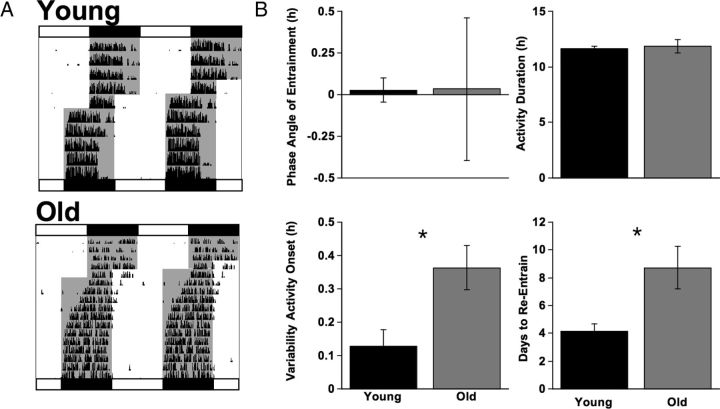Figure 1.
Effects of aging on locomotor activity rhythms under baseline conditions and during simulated jet lag. A, Representative double-plotted actograms illustrating wheel-running activity of a young and old mouse that re-entrained in 4 and 8 days, respectively. White and black bars above and below each actogram depict lighting conditions in place before and after the 6 h advance, respectively. Gray shading in each actogram indicates the presence of darkness. B, Measures of baseline activity rhythms and rate of re-entrainment in young (n = 9) and old (n = 7) mice. Old mice displayed more variability in the time of activity onset and a longer latency to re-entrain following the 6 h LD cycle advance, but they did not differ in phase angle of entrainment or activity duration. Student's t test, *p < 0.05.

